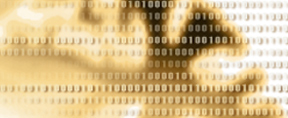ACTIVE TOUCH:
Touch in which, say the hand, moves to manipulate and explore an object to determine its properties, so using both touch on the skin but touch informed by and as a result of active exploratory movement too. As such active touch uses feedback of movement and position sense and comparison of this with motor commands as well as peripheral sensory feedback to discriminate. In passive touch, in contrast, the skin is touched by an object and does not move to explore.
ACTUATION POINT:
The position at which the jump mechanism is activated on the force-travel characteristic of a push-push switch.
ADAPTATION:
The systematic change in the response of a neuron to constant stimuli. Slowly adapting neurons show a mild decline in firing rate to an indented bar. Rapidly adapting neurons respond only with brief bursts of action potentials to the indentation and retraction of the bar.
AFFECTION TOUCH:
A cornerstone of personal relationship, this haptic behavior communicates messages of warmth, comfort, liking and affection.
AFFECTIVE TOUCH:
Touch may be divided into discriminatory functions (how large, soft, hot etc an object is, for instance), but also how pleasant it is. This pleasant, emotional or affective dimension is often encountered within a more social affiliative context.
AFFERENT NERVES:
Nerves whose impulses travel towards the central nervous system, i.e. sensory nerves.
ALLODYNIA (MECHANICAL):
A pathological condition in which light touch on the skin is perceived as being painful. A stimulus which is normally painless becomes felt as painful.
ALTERNOBARIC VERTIGO:
Dizziness affecting ascending divers with a blocked eustachian tube, causing unequal middle ear pressure in the two ears. There is a sensation of spinning towards the blocked ear, which retains a higher pressure and stimulates the semicircular canals.
ALZHEIMER´S DISEASE (AD):
It is a progressive neurodegenerative disorder, the most common type of senile dementia and the fourth cause of death in older adults. The neuropathological characteristics of ad are the amyloid plaques and neurofibrillary tangles that occur very early in the course of the disease (even before the clinical diagnostic), starting in the mesial-temporal lobe (entorhinal cortex and hippocampus. The disease progresses to other cortical association neocortical areas in an anterior-to-posterior projection.
AMERICANS WITH DISABILITIES ACT (ADA):
Civil right law in the USA that prohibits discrimination based on disability, signed 1990.
AMPA:
a-amino-3-hydroxy-5-methyl-4-isoxazolepropionic acid is an agonist for a subtype of synaptic glutamate receptors. It mediates fast synaptic transmission.
ANTHROPOMORPHIC ARM:
A robotic arm using the same number and configuration of joints as a human arm including joint constraints.
APLYSIA:
A large sea slug. Because of its big and few neurons it serves a model to study the cellular mechanisms of learning.
ARTIFICIAL SKIN:
Mat/suit sensors used to envelop a robot. The artificial skin comprises tactile sensors and others, i.e. sensors for temperature, distance etc.
ATTACHMENT STYLE:
A relational predisposition in infants and adults developed through one´s early interaction with caregivers.
AUTISM:
A neurodevelopmental disorder accompanied by severe deficiencies of speech/language development and nonverbal communication.
BARREL CORTEX:
Cortical representation area of whiskers in rodents. Since the representations of individ ual whiskers are quite large and somatotopically organised, barrel cortex serves as model for the study of plastic changes in cortical representations.
BARRIER-FREE:
Allowing the accessibility and usability of buildings and facilities for physically disadvantaged or disabled persons by architectural or technical means; example: Ramp for wheel chairs.
BAYESIAN DECISION THEORY:
Statistical approach to model decision making based on the probability that expresses knowledge and uncertainty of states (likelihood function, prior knowledge) and a utility function that expresses the preferences for consequences of the decision or action.
BENCHMARK:
Comparative analysis of products, processes and services.
BILATERAL SYMMETRY:
Symmetry in which similar anatomical parts are arranged on opposite sides of a median axis so that only one plane can divide the individual into essentially identical halves.
BILATERAL VESTIBULAR LOSS (BVL):
A condition in which the vestibular apparatus in the inner ear does not provide adequate accurate information to the brain concerning head acceleration. BVL is sometimes referred to as bilateral vestibular disorder or dysfunction (BVD).
BLINDNESS:
Loss of vision due physiological or neurological reasons; often also used to describe severe visual impairment with some residual vision; total blindness describes the complete loss of form and light perception.
BOTTOM-UP:
Bottom-up perceptually-driven processing that deals with a physical stimulus as opposed to top-down processing which refers to higher-level processing about the nature of the stimulus.
BOTULINUM TOXIN:
A neurotoxic protein produced by the bacterium Clostridium botulinum. In very small dosages, botulinum toxin is used for chemical denervation for therapeutic purposes, e.g. for the treatment of dystonias and spastic disorders.
BRAILLE:
The braille system, devised in 1821 by Louis Braille, is a method that enables blind people to read and write. Each braille character or «cell» is made up of six dot positions, arranged in a rectangle containing two columns of three dots each. A dot may be raised at any of the six positions to form 64 combinations (including the combination in which no dots are raised). These dot patterns code for letters and numbers.
BRAIN ORGANISATION:
Different brain areas can be distinguished with respect to anatomy, histology and function. Moreover even within a histologically homogenous brain area functional specialisation can be observed.
BRAINSTEM:
The anatomically lowest part of the brain, and serves to exchange information between the brain and the spinal cord and cranial nerves, as well a providing a variety of subconscious information processing and regulatory functions.
BURGER MODEL:
A mechanical model describing linear visco-elastic behaviour using four parameters: Two springs and two dashpots.
CAPACITIVE SENSORS:
Utilise the change of capacitance between two electrodes covering a deformable clielectric in order to detect a contact between sensor and object/human being.
CELL RECORDING:
An invasive technique in which a microelectrode is inserted in a neuron to measure changes in voltage or current related to action potentials.
CEREBELLUM:
Also called «little brain». A part of the brain anatomically behind the brainstem that provides a variety of sensory integration and both gross and fine motor control functions.
CLOTH SIMULATION:
Digital reproduction of the appearance and dynamic behaviour of clothes and textile materials.
COACTIVATION:
Tactile stimulation protocol to induce learning processes. Coactivation utilizes hebbian learning rules to drive synaptic changes in the cortical maps representing the stimulated skin sites. As a consequence, tactile processing is altered which alters the entire haptic perception.
COLLISION DETECTION:
Uses tactile sensors to detect an unintended collision between a robot and an object or human being. Spatial resolution of the detected contact is not necessarily required.
CONCEPTUALIZATION (CONCEPT FORMATION):
Perceptual level at which stimuli are responded to as a class (or concept) based on some similarity or common features (e.g. object properties).
...





